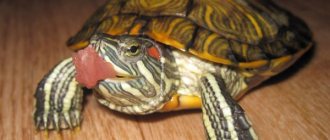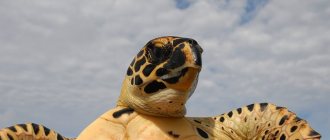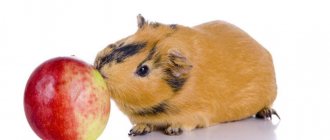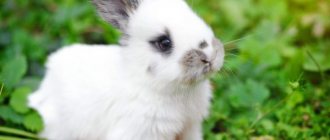Many owners of land turtles wonder: can their pets breed in captivity? Until relatively recently, obtaining offspring from these exotic animals was considered almost a feat. Very little was known about the care of small turtles. Even those owners whose pets had offspring experienced significant difficulties in preserving and further raising young animals.
Fortunately, the situation has now changed, and various species of turtles often breed at home. But only if certain rules are followed can one achieve sustainable success in this rather difficult matter.
A few important points to consider before breeding
- To give baby turtles the best start in life, it is important that they are conceived by healthy parents. Do not breed from turtles that show signs of illness or stress. You also cannot take animals that you have recently cured.
- If a male turtle is producing healthy, motile sperm capable of fertilizing eggs, he needs to receive just as much attention as a female turtle. This factor is often overlooked by new breeders.
- Sexual maturity in land turtles occurs at approximately 10-15 years for females, and at 5-6 years for males. Until this point, they should not be mated.
- A male can be defined as follows: in the shell of male individuals there is a special hole so that he can mate with females. The tail is longer mainly in males, and the anus is located at the tip of the tail.
- You can determine readiness for mating by the behavior of your pets. The breeding season for turtles in the wild coincides with spring. The activity of turtles sharply increases: males begin to fight for the attention of females and make certain sounds similar to barking.
- If fertilization has occurred, the behavior of the female will indicate this. Two months after mating, females begin to lay eggs. To do this, the expectant mother digs a hole and sprays it with the contents of her urinary and two anal bladders. After this, she needs to bury the hole and compact the earth. To do this, the female stands on her feet and then sharply leans her shell against the ground.
- The female is able to store sperm for several years!
Wintering
Another method is cooling. Reptiles are placed one at a time in cloth bags and placed in sphagnum moss. Boxes with turtles should be taken to a cool room (from 0 to 12 degrees). To prevent dehydration, the filler should be sprayed with water from a spray bottle every day. As a rule, artificial wintering lasts about four weeks. The turtle boxes can then be moved back into the house. After two days, the animals can be placed in a terrarium and a heat lamp can be turned on, thereby increasing the duration of daylight hours to 16 hours. It is very important to include foods rich in vitamin E in your pet’s diet.
Peculiarities of breeding of domestic turtles
To hatch small turtles, you will need to create the following conditions.
Warm. Turtles need to have free access to a warm environment. Heat is necessary for the proper functioning of the digestive system. The state of the immune system also depends on the presence of heat.
Diet. A turtle will only be healthy if it is fed well, based on a well-balanced diet high in calcium and phosphorus. If turtles are malnourished before laying fertilized eggs, the risk of late embryonic death increases during incubation.
Ultraviolet. The turtle requires natural sunlight or artificial lighting.
Conditions for mating
Reproduction of the red-eared turtle is possible subject to the optimal age for mating - individuals must be young, but at the same time have reached sexual maturity. The readiness of females to reproduce is observed at the age of five, males begin to give birth to offspring in the fifth year of life. If you keep more than two turtles at the same time, it is advisable that there is only one male among them, otherwise the males will fight for the opportunity to mate, causing injury to each other.
Pond slider
Mineral and vitamin supplements
The diet of turtles requires supplementation with minerals and vitamins. In particular, the female needs additional food supplements throughout the entire period before mating and during egg laying. This is important because it will consume large reserves of calcium to form the calcareous shells of the eggs. She also needs to supply the yolk with nutrients for the developing embryo.
To ensure that the female can produce healthy offspring, give her daily calcium carbonate in the form of limestone flour, pouring it separately from food, and special vitamins, for example, nutrobal or vionate (3 times a week).
Pregnancy period
After mating, individuals should be immediately placed in separate terrariums. The fact is that after intercourse, males often show aggression. So, let's continue to look at how turtles reproduce. The female bears the eggs for about two to three months. During this period she behaves restlessly. Experienced zoologists recommend including fresh foods rich in vitamins in her diet. The temperature in the terrarium must be maintained within 22–26 degrees Celsius. And on land you should prepare a separate place for laying eggs. To do this, dig a hole in the soil or sand and place a small container with sphagnum moss there so that it is level with the land. After laying eggs, the female forgets about her offspring.
Stressful situations
If the male is too active, he can injure the female, so you should not keep him nearby all the time. The turtle also needs distance from the male to successfully lay eggs. In a tense state, she can retain eggs, which will lead to serious complications. In captivity, despite all attempts, the female cannot independently hide from the persistent advances of her partner; for this reason, many breeders do not keep adult males and females together, placing them only for mating purposes.
Feeding the turtles
In their natural habitat, turtles do not feed their young with milk; the babies do not know their mothers and get their own food. Thanks to the presence of a yolk sac, both land and aquatic species of reptiles can easily do without food for the first time. In the wild, the spare yolk allows young turtles to go without food for up to 9 months!
Feeding a baby red-eared turtle at home begins at the end of the first week of the exotic pet’s life, when the newborn turtle has completely settled into its new home and is accustomed to its aquatic habitat. By nature, freshwater reptiles are predators, although most often red-eared sliders are omnivores. Growing babies are first offered animal food: daphnia, gammarus, bloodworms, and coretra. As they grow older, fresh herbs, pieces of sea fish, and shrimp are added to the diet.
Experts recommend giving young animals special vitamin supplements for reptiles, which ensure the proper development and growth of small reptiles. Babies need to be fed more often than adults; daily feeding is used in the first weeks of life. After 2 months, babies are switched to eating every other day; by six months, animals should eat no more than once every 3 days. You should not overfeed the cubs to avoid the development of metabolic disorders.
Video: caring and feeding newborn red-eared turtles
At the end of the first week of life, baby land turtles are offered lettuce, parsley, and dandelion leaves. Grown-up pets can be given an apple and carrots. A prerequisite for the correct formation of the skeleton and shell is the presence of sources of calcium in the diet of babies. You can add crushed egg shells, chalk for reptiles, or put a cuttlefish bone in the terrarium.
Newborn babies, toy-sized, are already carefully studying the world with their tiny beady eyes and actively working with their limbs, trying to master a new territory.
Tiny bright green red-eared turtles, swimming funny in the aquarium, invariably cause delight among all family members.
Sources:
https://homkin.ru/cherepahi/razmnozhenie-cherepah/osobennosti.html https://turtle-home.net/18-razmnozhenie-krasnouhih-cherepah-v-domashnih-usloviyah.html https://homkin.ru/ cherepahi/razmnozhenie-cherepah/rozhdenie.html
Selection of breeding material
When breeding exotic animals, take care of the health of the offspring. It is important to select healthy, mature female and male turtles of the same species and subspecies. Use turtles from different breeding lines; possible inbreeding increases the risk of producing genetically deformed offspring.
If mating occurs between different species/subspecies, the eggs may be infertile, or the subsequent offspring may be so. This practice is discouraged as it leads to the destruction of the species.
Lifespan.
No known vertebrate lives as long as turtles. Most of the information suggesting that their lifespan is slightly more than 50 years refers to individuals kept in captivity. Some species certainly live much longer. The Carolina box turtle (Terrapene carolina) found in Rhode Island was almost certainly 130 years old. The maximum period is considered to be approx. 150 years, but it is quite possible that the actual life expectancy of individual individuals is much longer.
Age and selection characteristics of turtles
- Sexual maturity in turtles depends on their size. In captivity, pets have constant access to good food, so they often grow faster than their wild counterparts. In the wild, turtles may not be sexually mature or capable of producing fertilized eggs until they are 15 to 20 years old. In captivity, sexual maturity can be reached at approximately 4 - 5 years. Breeding such young turtles in captivity will certainly affect the health of the female, so breeding should be delayed until the turtle is older.
- Males often prefer larger females, so it is important to keep females of the same size in the same breeding group.
- Elderly turtles should also not be forced to mate, as their offspring may have a lot of genetic defects, and there is also a high risk of obstetric complications during laying.
Determination of gender
To ensure reptiles reproduce at home, it is necessary to find out which sex each turtle belongs to. Obviously, the offspring is the result of the mating of a male and a female.
This is interesting: A female reptile can lay eggs without the participation of a male, but storing them will not give any results, since fertilization in this case was not carried out.
Sexual dimorphism in red-eared turtles appears at one year of age. For comparison, it is recommended to take reptiles of the same age. The distinction between individuals is carried out according to the following criteria:
- body size (females are larger);
- claws on the front paws (in males they are longer);
- tail (longer in males than in females);
- the shape of the lower part of the shell (in females it is flat, in boys it is concave).
Incubation of turtle eggs
Turtle incubator diagram
While in captivity, turtles are able to lay eggs at any time of the year. For mating to occur, several males are needed to compete for the female's attention. One male will not show interest in a female. After mating, females need vitamins E and D, as well as large amounts of calcium. The female can also lay unfertilized eggs. But if you know for sure that you have both males and females, and they had the mating process, then you can try to incubate such eggs.
Turtles can also lay eggs on the floor, but it is better to build a special box for this purpose. It is important that the female is able to dig a hole in it. The substrate that is characteristic of the wild habitat of this turtle is placed in the box. This is sand or a mixture of sand, peat and sphagnum, which must be moist. The laid eggs must be quickly transferred to the incubator. It is important not to turn the eggs for the first 5-6 hours after laying, because the embryos will die. Therefore, when you take the eggs out of the substrate, draw a cross on their top or write the egg number.
To incubate eggs, you can take microwave containers, cover the cells with a layer of damp substrate (about 5 cm) and make small holes in it, then carefully place the eggs in them (without burying them). After a couple of days, you need to check whether all the eggs have survived, and remove the dead ones from the container. If fungus appears on the eggs, it must be removed using an antiseptic solution for mouth rinsing, diluting it with water, using a one-to-one ratio.
A good incubator option is a 20 liter aquarium. A heating element with a thermostat is placed in it, and several bricks are also placed. Next, the aquarium is filled with water to one third or one second of the volume. A cuvette with eggs is placed on the bricks, which should not touch the water. The temperature in the aquarium should be 25-30 °C. The incubator should be kept away from sunlight and drafts.
Before being born, a small turtle makes a hole in its shell. For about a day, while still in the egg, she feeds on the contents of the yolk sac. You cannot remove a turtle from an egg yourself! They are transferred to small aquariums, at the bottom of which a mixture of wet sand and peat is poured. Forest species of turtles do not tolerate dry air. They need the same temperature in the aquarium as adults.
Small turtles need to be fed plant foods with the addition of calcium supplements. To obtain vitamin D, they are irradiated with ultraviolet lamps.
Terrarium
Some believe that you can keep a reptile in a regular cardboard box. It's a delusion. In order for your pet to feel as comfortable as possible, he needs to create all the necessary conditions. For these purposes, only a terrarium with high walls (about 1 meter) can be suitable. You should pour fairly coarse sand at the bottom, and make a small canopy out of fabric or cardboard in the corner. Such living conditions are the most natural for these animals. The terrarium must be equipped with heating, ventilation and lighting systems. Since many species of turtles require ultraviolet radiation, it is recommended to install UV lamps along with conventional lamps. They should be placed at a distance of at least 60 centimeters from the location of the reptile. Small ventilation holes should be made in the walls and on the lid of the terrarium. For aquatic turtles, you need to build a small pond at the same level as the floor. It is very useful to place young individuals of freshwater species in an aquarium with water for some time. It should be regularly replaced with fresh, settled one.
Dermochelyidae
(leatherback turtles). The leatherback turtle (Dermochelys coriacea) is the only living species of this family. This giant can reach a mass of more than 680 kg with a front flipper span of 3.6 m. The leathery shell bears 7 longitudinal ridges on the dorsal side and 5 on the ventral side. Although the range of these turtles covers all warm oceans, they are the rarest among the widespread marine species of the order. The question of the systematic position of the group remains controversial. It was allocated to a special suborder Athecae (scutellae), but most experts agree only on the rank of superfamily.
Pelomedusidae, Chelidae
(suborder side-necked turtles: pelomedus and snake-necked). Representatives of these two families differ in the way the neck bends when the head is pulled under the edge of the shell: if in other turtles the neck bends in a vertical plane, then in them it bends in a horizontal plane, which is explained by the special structure of the spine. Side-necks live in the Southern Hemisphere or the regions closest to it and are not found in North America, Europe and Asia. Both families unite approx. 50 types. The most bizarre of all turtles, the matamata (Chelus fimbriata) from South America, is a snake-necked turtle. Her head is covered with many outgrowths sticking out in different directions. The Australian snake-necked turtle (Chelodina longicollis) has a thin neck almost as long as its shell.
Trionychidae
(three-clawed). These turtles are easily recognized by their soft, leathery shell without any scutes. They have a flat body, an elongated conical snout and legs with webbed swimmers. These are one of the fastest turtles, moving quickly both in water and on land. The long neck allows it to grab food and bite the enemy painfully, even if they are at a considerable distance. The claws of large individuals can leave deep scratches. Representatives of certain species tolerate captivity well, living in it for up to 20 years or more (the record is 25). Some three-clawed turtles are highly prized for their tasty meat. The largest of their 20 species, the large soft-shelled turtle (Pelochelys bibroni) lives in Southeast Asia; its shell reaches a length of more than 1.2 m. Representatives of this family live in North America, Africa, Southeast Asia, the Malay Archipelago and New Guinea. Three species are found in the United States.
What does a sea turtle eat?
Photo: Large sea turtle
Most sea turtles are dangerous predators.
The diet of sea turtles includes:
- seaweed;
- plankton;
- crustaceans;
- shellfish;
- fish;
- snails;
- shrimp and crabs.
Interesting fact: Green turtles are predators only during the first years of their lives; as they age, they switch to plant foods.
Sea turtles hunt in different ways. Most wait for their prey in algae thickets for a long time and then suddenly attack. Some turtles use their tongue as bait, exposing it and waiting for the fish to swim up to it to grab it.
Sea turtles are able to swim quickly and dive to great depths for prey. Sea turtles have been known to attack some waterfowl, but this is rare. Among some species of turtles, cases of cannibalism have been reported; large turtles attack juveniles and small turtles.
Small sea turtles are often kept as pets. In captivity, a sea turtle is fed meat and various offal, chicken, insects, fish, shellfish and crustaceans; it is also necessary to ensure that there is a lot of vegetation in the aquarium; turtles love to eat algae.
When feeding, meat and fish must be cut into small pieces, removing the bones. Once a month they give additional vitamin and mineral supplements, chalk, and eggshell powder.
Chelydridae
(snapping turtles). The family includes only 2 species, of which the best known is the snapping turtle (Chelydra serpentina). It is an aquatic reptile native to much of North America and northwestern South America, abundant in southeastern Canada and the eastern half of the United States, where it is highly prized as a food item. Snapping turtles are unfairly blamed for killing large numbers of fish and waterfowl. The weight of these animals often reaches 13.6 kg. When pulled out of the water, they can bite painfully.
Another species, the snapping turtle (Macrochelys temmincki) is one of the giants of the order, reaching a mass of approx. 90 kg. Not only are they the heaviest of its freshwater species, but they are also the most water-bound of the North American turtles. They are found in the southeastern United States, mainly in the lower Mississippi. Being slow, the snapping turtle lures prey with the help of a fleshy outgrowth of the bottom of the mouth, which moves in its open mouth like a worm.
Emydidae
(freshwater turtles). This is the largest family of the order, uniting more than a third of all its species. They are common to the northern continents, also found in northern South America and Africa and are very diverse in size and body shape.
The painted turtle (Chrysemys picta), which is distributed throughout the United States, is one of the most famous members of the family. It often reaches high numbers even in small ponds. Box turtles (Terrapene) are also a common genus, but are not found in the western United States. They are mostly land animals; the movable elements of the plastron enable them to tightly close all the openings of the shell, like flaps. Ornamented turtles (Pseudemys) inhabit the southeastern United States.










